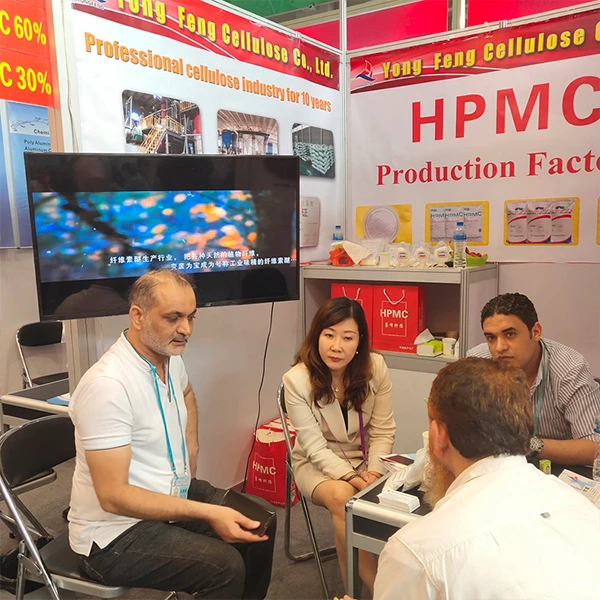Exploring HPMC in Tile Adhesives A China Perspective
In recent years, China has emerged as a leading manufacturer and supplier of various construction materials, including tile adhesives. One key ingredient that significantly enhances the performance of tile adhesives is Hydroxypropyl Methylcellulose (HPMC). This cellulose ether is widely used due to its unique properties and versatility, making it an essential component in the formulation of high-quality tile adhesives. This article delves into the importance of HPMC in tile adhesives, its advantages, and the current trends in its application within the Chinese market.
What is HPMC?
Hydroxypropyl Methylcellulose (HPMC) is a semi-synthetic polymer derived from cellulose, an abundant natural polymer. It is known for its water-retention properties, enhancing the workability and performance of adhesives. HPMC is a white to off-white powder that is soluble in water, forming a transparent viscous solution. Its modification with hydroxypropyl and methyl groups improves its stability, reduces brittleness, and enhances adhesion properties, making it ideal for use in tile adhesives.
Advantages of Using HPMC in Tile Adhesives
1. Enhanced Workability HPMC significantly improves the consistency of tile adhesive mixtures, allowing for easier application. This is particularly important in construction settings where time and efficiency are critical.
2. Water Retention One of the standout features of HPMC is its ability to retain water. This property ensures that the adhesive remains workable for extended periods, preventing premature drying, which can lead to poor bonding and tile failures.
3. Thickening Agent HPMC acts as an effective thickener, allowing manufacturers to adjust the viscosity of their tile adhesive formulations according to specific application requirements. This adaptability is crucial for achieving the desired texture and performance.
4. Improved Adhesion The presence of HPMC in tile adhesive formulations enhances the bonding strength between tiles and substrates. This is crucial for ensuring long-lasting tile installations.
5. Hydrophobic Properties HPMC can impart hydrophobic characteristics to the adhesive, which helps in resisting water penetration. This feature is especially beneficial for tile applications in wet environments, such as bathrooms and kitchens.
china hpmc for tile adhesive

6. Eco-Friendly Being derived from natural cellulose, HPMC is generally considered non-toxic and environmentally friendly, aligning with the growing demand for sustainable construction materials.
HPMC in the Chinese Tile Adhesive Market
China's construction industry has been experiencing rapid growth, leading to an increased demand for tile adhesives. The integration of HPMC in tile adhesive formulations has become a trend among manufacturers aiming to improve product performance and cater to the evolving needs of consumers.
Local Chinese manufacturers are increasingly adopting high-quality HPMC sourced from reputable suppliers. This collaboration not only enhances the performance of tile adhesives but also complies with international standards, improving the competitiveness of Chinese products in the global market.
Moreover, the growing trend of eco-friendly construction practices has prompted many manufacturers to focus on producing tile adhesives that are low in volatile organic compounds (VOCs). HPMC plays a vital role in achieving these formulations, contributing to healthier indoor environments.
Future Trends
As the demand for quality construction materials continues to rise in China and globally, the role of HPMC in tile adhesives is likely to expand. Manufacturers are investing in research and development to create innovative formulations that capitalize on the benefits of HPMC while addressing the increasing consumer preference for sustainable and eco-friendly products.
Additionally, advancements in technology and production methods will likely result in more efficient and cost-effective production of HPMC, further enhancing its availability and application in tile adhesives.
Conclusion
The integration of HPMC in tile adhesives represents a significant advancement in construction material technology. With its unique properties enhancing adhesion, workability, and water retention, HPMC stands out as a critical component in tile adhesive formulations. As the Chinese market continues to grow, the demand for high-quality, eco-friendly tile adhesives fortified with HPMC is expected to rise, presenting opportunities for innovation and development in the industry. Ultimately, HPMC not only contributes to the performance of tile adhesives but also plays a pivotal role in the sustainability of construction practices in China and beyond.
-
The Application and Significance of Construction RdpNewsMay.19,2025
-
Industrial Grade HpmcNewsMay.19,2025
-
Building Coating Adhesive Building Coating Adhesive HpmcNewsMay.19,2025
-
Application Of Hpmc For Detergent For Detergent In DetergentsNewsMay.19,2025
-
Application Of Hpmc Cellulose In Cement-Based MaterialsNewsMay.19,2025
-
Application Of High Quality Hpmc For Construction In The Field Of ConstructionNewsMay.19,2025




